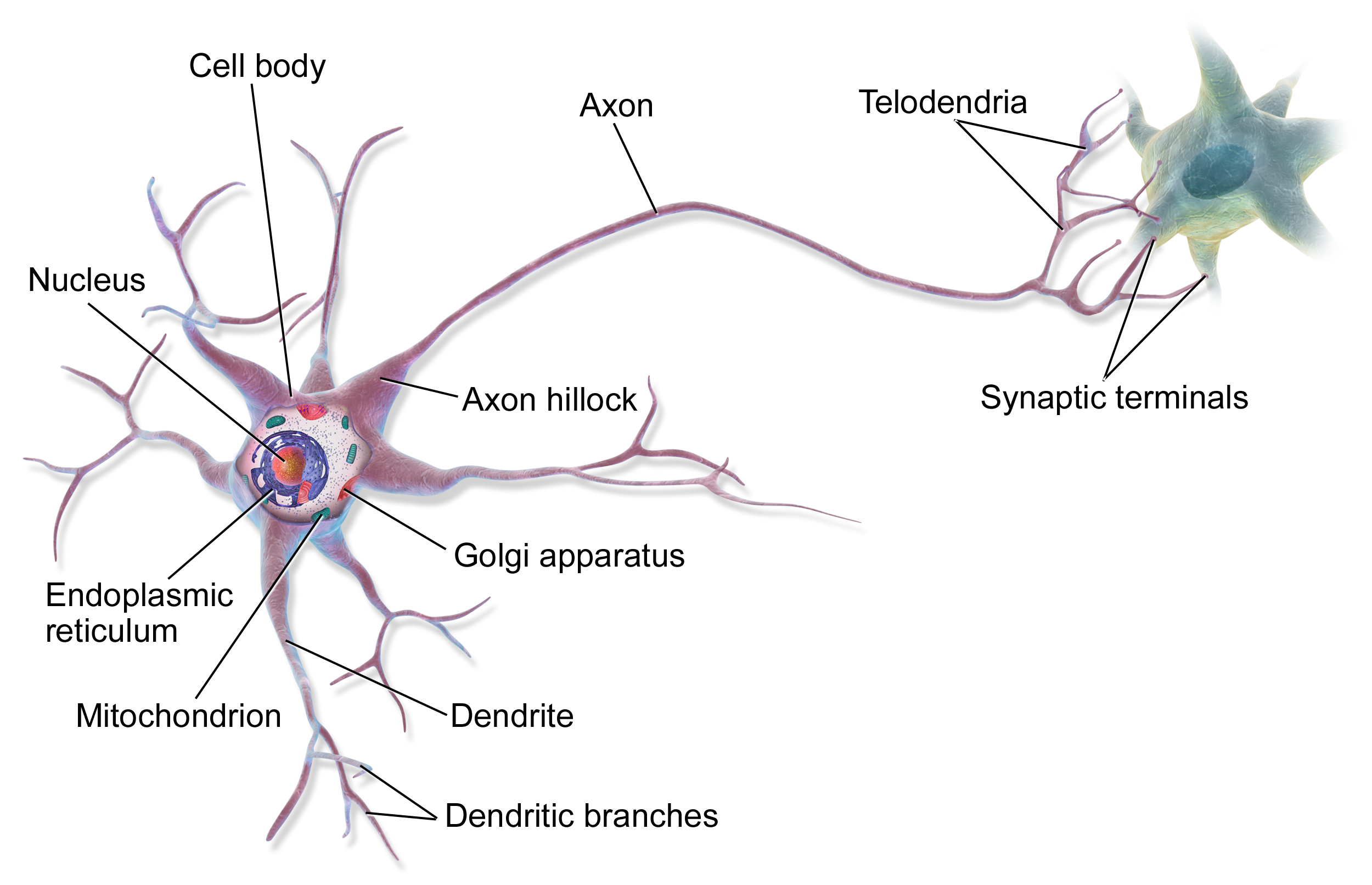NEURON
The three main neurons include the sensory, motor and interneuron. The neuron primarily consists of four components; the soma, axon, dendrites, and synapses.
- The soma is the cell body of the neuron
- The axon is the long projection that conducts electrical impulses away from the soma.
- The dendrites conduct electrical signals towards the soma.
- The synapses transfer electrical signals from one neuron to another.
The action potential moves along the neuron’s axon as the membrane depolarizes and repolarizes. The action potential is able to travel at a faster speed due to the nodes of Ranvier. These gaps in the myelin sheath allow the action potential to jump from one node to the next.
.PNG)

SYNAPSE
The synapse (neuronal junction) is composed of three main components. This includes the pre-synaptic membrane, the synaptic cleft and the postsynaptic membrane [view synapse diagram below]. The signal sent from one neuron to the next, is electrochemical because it involves a change in voltage as well as the concentration of certain ions. During the resting phase the sodium ions are more concentrated on the outside of the membrane while potassium is more concentrated on the inside. This uneven distribution is maintained by active transport across sodium potassium pumps. If a nerve is stimulated, this is called action potential. When an incoming message is received, this is called depolarization, and causes the sodium channels to open and sodium ions to defuse into the axon. Then the potassium channels open and allow the potassium ions to diffuse out. Then the sodium and potassium ions are transported back across the membrane during the recovery phase. This impulse will continue to move down the axon until it reaches the synapse.
When the nerve impulses reach the end of the axon, this is called the threshold, and it causes calcium ions to flow into the endings. The calcium ions cause proteins to pull the synaptic vesicles to the inner surface and fuse with the presynaptic membrane. This releases the neurotransmitters into the synaptic cleft, which allows receptors on the postsynaptic membrane to bind with specific neurotransmitters. When this bond happens, the specific receptors open ion channels which causes the nerve impulse to be transmitted down the dendrite of the second neuron. The receiving neuron will decide whether to send the signal or not whether the neurotransmitter message received is excitatory (ex. Glutamate) or inhibitory (ex. GABA). An excitatory signal stimulates the action potential while an inhibitory signal represses it.
